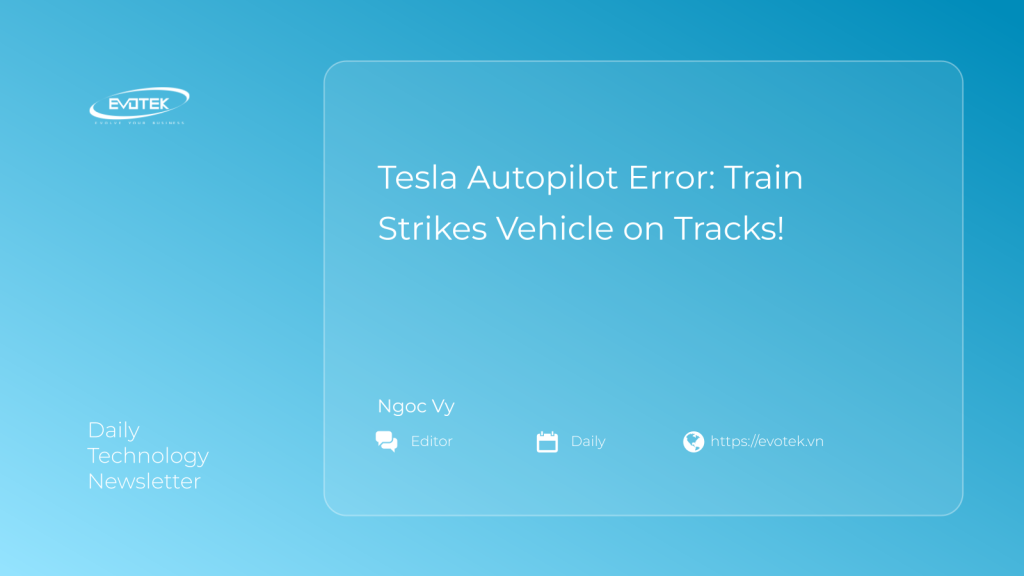A near-disaster unfolded in Sinking Spring, Pennsylvania, as a Tesla operating in self-driving mode veered onto a set of railroad tracks. According to a WFMZ report, the incident occurred when the Tesla made a left turn onto the tracks, traveling approximately 40-50 feet before becoming stuck.
Fortunately, the three passengers inside the vehicle were able to evacuate safely mere minutes before a train collided with the EV. Western Berks Fire Commissioner Jared Renshaw confirmed the details to WFMZ.
Self-Driving Under Scrutiny
This incident arrives as Tesla initiates its autonomous taxi service in Austin, Texas, intensifying the debate surrounding the safety and reliability of self-driving technology. Despite Elon Musk’s assertions regarding the enhanced safety of Tesla’s autonomous systems compared to human drivers, the company’s track record remains under close examination.
The National Highway Traffic Safety Administration (NHTSA) has investigated almost 500 crashes involving Teslas using self-driving mode, with 13 resulting in fatalities. Their findings indicate that in over 45% of these incidents, the Tesla collided with another vehicle or obstacle despite sufficient time for a human driver to react and prevent the crash. Furthermore, 31% of the incidents involved the Tesla skidding off the road in adverse weather conditions.
Confidence vs. Capability: A Dangerous Mismatch
The NHTSA report suggests that a primary cause of these accidents is a “mismatch” between driver expectations and the actual capabilities of Tesla’s Autopilot system. While Autopilot might instill greater driver confidence, it doesn’t adequately guarantee driver attention or responsible usage.
The Future of Autonomous Driving: High Stakes, High Hopes
The autonomous vehicle industry is projected to generate $300-400 billion in annual revenue by 2035, according to McKinsey & Company. This lucrative potential motivates tech companies to invest heavily in self-driving technology, promising enhanced safety and efficiency.
Waymo, owned by Alphabet Inc., currently provides a quarter of a million rides weekly using its 1,500 autonomous vehicles and aims to double this number by 2026. Amazon’s Zoox is also testing its autonomous vehicles in San Francisco.
Currently, Tesla’s robotaxi program is smaller, launching in Austin with a limited number of vehicles, each including a “Tesla Safety Monitor” and remote monitoring.
Regulation and Oversight
The U.S. lacks a comprehensive federal law governing autonomous vehicles, leaving regulation to individual states. As of 2024, 35 states have enacted autonomous-vehicle legislation. The question remains: will self-driving cars truly deliver on their promise of a safer future, or do incidents like this Tesla train collision highlight the challenges that still lie ahead?

 日本語
日本語 한국어
한국어 Tiếng Việt
Tiếng Việt 简体中文
简体中文